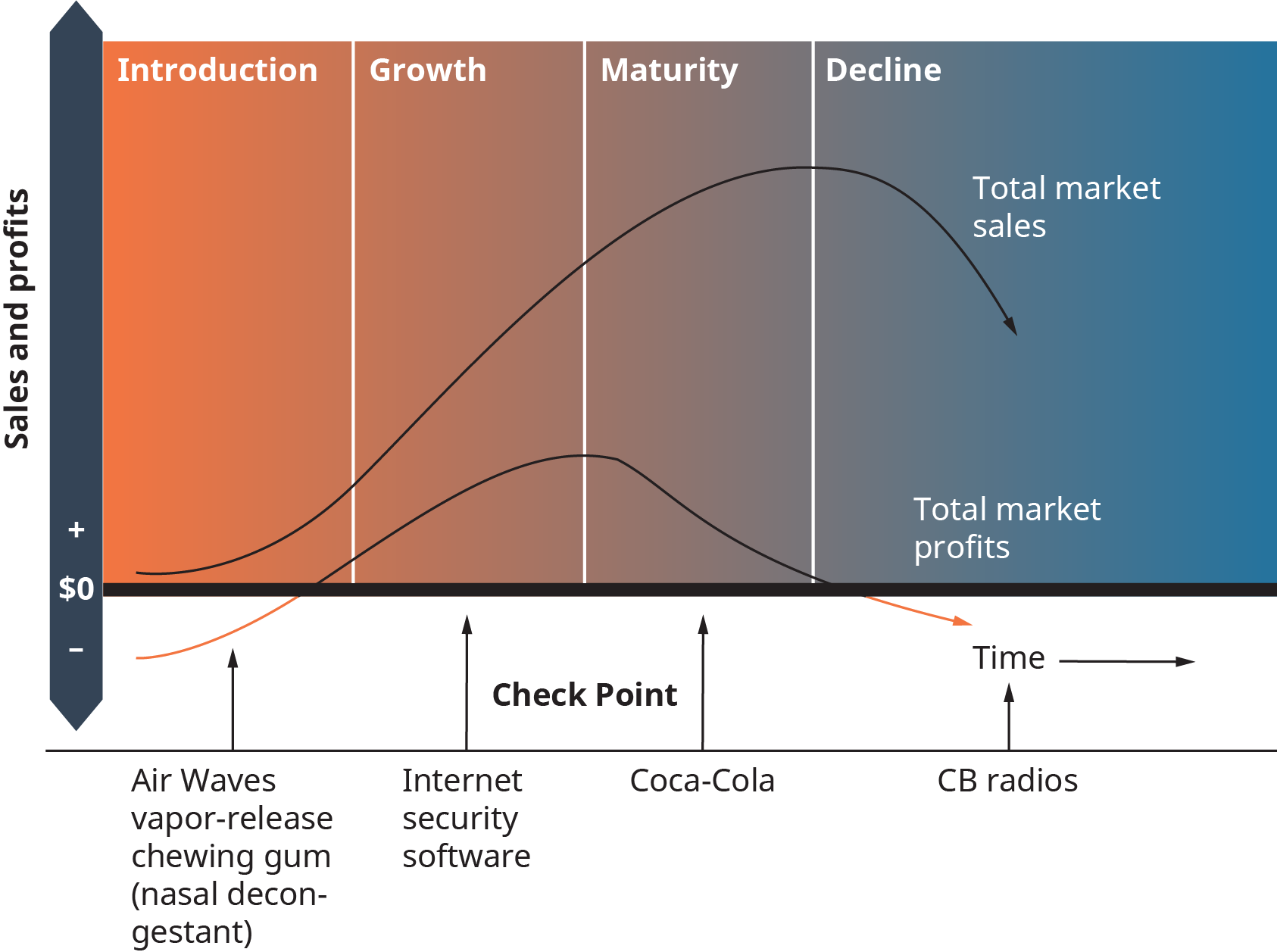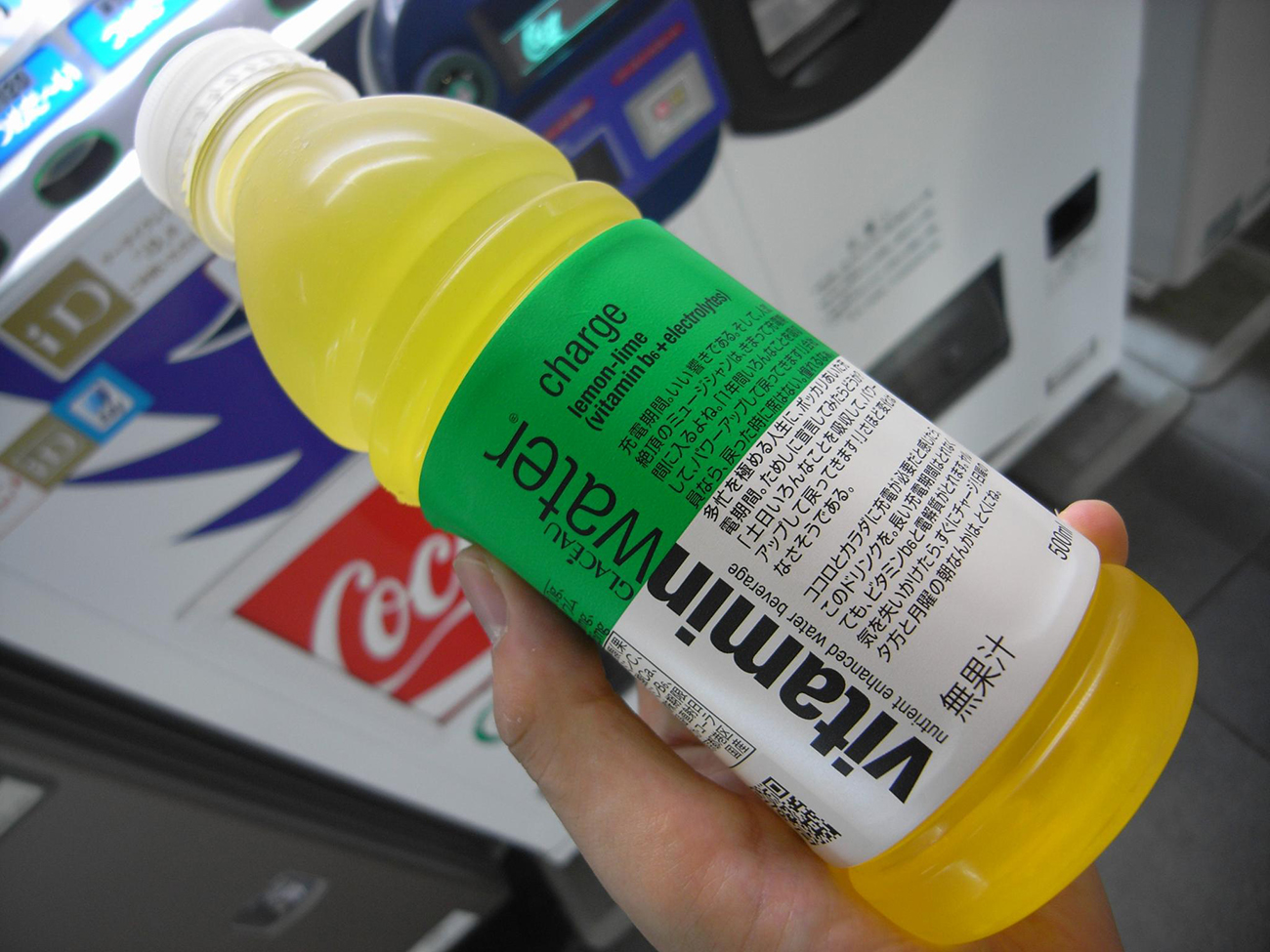What Is The Anticipated Life Cycle Of The Product Or Service Offering?
Creating Products and Pricing Strategies to Run across Customers' Needs
98 The Product Life Cycle
- What are the stages of the production life cycle?
Product managers create marketing mixes for their products equally they move through the life wheel. The product life cycle is a pattern of sales and profits over fourth dimension for a production (Ivory dishwashing liquid) or a production category (liquid detergents). Equally the product moves through the stages of the life wheel, the business firm must keep revising the marketing mix to stay competitive and run across the needs of target customers.
Stages of the Life Cycle
As illustrated in (Figure), the product life cycle consists of the post-obit stages:
-
Introduction: When a product enters the life cycle, it faces many obstacles. Although contest may be light, the introductory stage normally features frequent product modifications, express distribution, and heavy promotion. The failure charge per unit is high. Production and marketing costs are also high, and sales book is low. Hence, profits are ordinarily small or negative.
-
Growth: If a product survives the introductory stage, it advances to the growth stage of the life cycle. In this stage, sales abound at an increasing charge per unit, profits are good for you, and many competitors enter the marketplace. Big companies may start to larn minor pioneering firms that have reached this stage. Emphasis switches from main demand promotion to aggressive brand advertising and communicating the differences between brands. For example, the goal changes from convincing people to buy apartment-screen TVs to convincing them to buy Sony versus Panasonic or Sharp.
Sales and Profits during the Product Life Bicycle
(Attribution: Copyright Rice Academy, OpenStax, under CC By iv.0 license.)

Distribution becomes a major central to success during the growth stage, as well as in later stages. Manufacturers scramble to acquire dealers and distributors and to build long-term relationships. Without adequate distribution, it is impossible to establish a strong market position.
Toward the end of the growth stage, prices normally begin falling, and profits meridian. Toll reductions result from increased competition and from price reductions from producing larger quantities of items (economies of scale). Likewise, most firms have recovered their development costs by now, and their priority is in increasing or retaining market share and enhancing profits.
-
Maturity: Afterwards the growth stage, sales continue to mountain—but at a decreasing rate. This is the maturity stage. Most products that have been on the marketplace for a long time are in this phase. Thus, near marketing strategies are designed for mature products. Ane such strategy is to bring out several variations of a basic product (line extension). Kool-Help, for example, was originally offered in six flavors. Today there are more than 50, as well every bit sweetened and unsweetened varieties.
-
Decline (and decease): When sales and profits autumn, the product has reached the pass up phase. The charge per unit of refuse is governed past two factors: the rate of change in consumer tastes and the rate at which new products enter the market place. Sony VCRs are an example of a product in the turn down stage. The demand for VCRs has now been surpassed by the need for DVDs and online streaming of content. Sometimes companies tin can improve a product by implementing changes to the product, such as new ingredients or new services. If the changes are accepted by customers, it can atomic number 82 to a product moving out of the decline stage and back into the introduction stage.
Each year Coca-Cola adds new drinks to its product portfolio. While some of these new beverages are close relatives of the original Coca-Cola Classic, others, such as Vitaminwater, constitute entirely new categories of soft drink. What challenges do new products such equally Vitaminwater face during the introduction phase of the production life bike? (Credit: kobakou/ Flickr/ Attribution 2.0 Generic (CC By two.0))

The Product Life Wheel equally a Management Tool
The product life wheel may be used in planning. Marketers who understand the cycle concept are better able to forecast future sales and plan new marketing strategies. (Figure) is a cursory summary of strategic needs at diverse stages of the product life bicycle. Marketers must be sure that a product has moved from one stage to the adjacent before changing its marketing strategy. A temporary sales reject should not exist interpreted as a sign that the product is dying. Pulling back marketing support tin can go a self-fulfilling prophecy that brings about the early death of a salubrious production.
| Strategies for Success at Each Stage of the Product Life Wheel | ||||
|---|---|---|---|---|
| Category | Introduction | Growth | Maturity | Decline |
| Marketing objectives | Encourage trial, found distribution | Go triers to repurchase, concenter new users | Seek new user or users | Reduce marketing expenses, used to keep loyal users |
| Production | Establish competitive advantage | Maintain product quality | Change product | Maintain product |
| Distribution | Establish distribution network | Solidify distribution relationships | Provide additional incentives to ensure back up | Eliminate trade allowances |
| Promotional | Build brand sensation | Provide information | Reposition product | Eliminate most advertizement and sales promotions |
| Pricing | Prepare introductory price (skimming or penetration pricing) | Maintain prices | Reduce prices to see competition | Maintain prices |
- What is the production life cycle?
- Describe each stage of the product life cycle.
- What are the marketing strategies for each stage of the product life cycle?
Summary of Learning Outcomes
- What are the stages of the product life cycle?
Afterwards a product reaches the marketplace, it enters the product life bicycle. This wheel typically has four stages: introduction, growth, maturity, and decline (and perchance death). Profit margins are usually small in the introductory stage, reach a superlative at the end of the growth stage, and then refuse.
Price indicates value, helps position a product in the market place, and is the means for earning a fair return on investment. If a price is likewise high, the product won't sell well and the firm will lose money. If the price is too depression, the firm may lose money even if the product sells well. Prices are ready according to pricing objectives.
Glossary
- product life cycle
- The pattern of sales and profits over time for a product or product category; consists of an introductory phase, growth stage, maturity, and decline (and death).
What Is The Anticipated Life Cycle Of The Product Or Service Offering?,
Source: https://opentextbc.ca/businessopenstax/chapter/the-product-life-cycle/
Posted by: trainorwimen1956.blogspot.com


0 Response to "What Is The Anticipated Life Cycle Of The Product Or Service Offering?"
Post a Comment